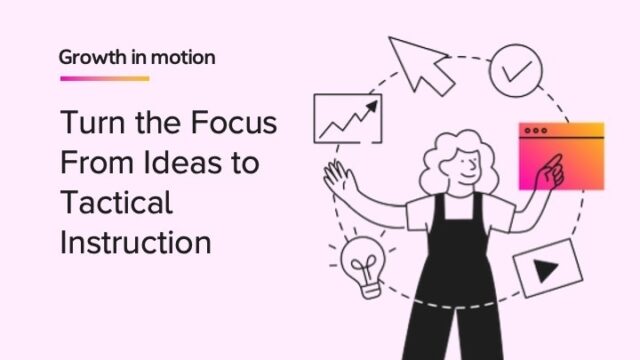
Formative assessments are an essential tool to support teaching—providing insights into student comprehension and learning needs. This post delves into common formative assessment examples, both informal and formal assessment methods, and how to implement them in the classroom.
What are formative assessments?
According to the Council of Chief State School Officers, formative assessment is a “planned, ongoing process used by all students and teachers during learning and teaching to elicit and use evidence of student learning to improve student understanding of intended disciplinary learning outcomes and support students to become self-directed learners.”
Educators use formative assessments to collect data on student understanding during the learning process and administer them continuously throughout an academic year or course of study. Their primary purpose is to inform teachers about how their students are progressing. Based on the information gathered through formative assessments, educators can adjust their instruction by possibly slowing down their pace, reteaching instruction, or challenging students with new and potentially more difficult tasks. Ultimately, formative assessments aim to improve student achievement.
What are examples of formative assessments in the classroom?
From a teacher’s daily interactions to structured tests, formative assessments can vary widely. Here, we explore both informal and formal methods that can aid in fostering a responsive learning environment. To be truly formative in nature, the teacher must use the data that is collected to inform instruction, regardless of informal or formal formative assessments.
Informal formative assessment examples
Informal formative assessments are unstructured and easy to integrate into everyday classroom activities. They are especially helpful for adaptive instruction, allowing for immediate adjustments based on student feedback.
1. Quick writes: Students spend a minute at the end of a lesson writing a response to a prompt about the key concept covered. This activity helps teachers quickly assess each student’s grasp of the material, providing a snapshot of class understanding.
2. Think-pair-share: In addition to promoting collaborative discussion, critical thinking, and verbal articulation of understanding, teachers can use think-pair-shares as data points to guide instructional decision-making. Think-pair-shares involve three steps: students first think about a question independently, then discuss their thoughts with a peer, and finally share their findings with the class.
3. Exit tickets: A classic! Students write responses to a question or a summary of the day’s lesson before they leave class. This method can quickly gather feedback on what students have grasped and what may need further clarification. Note that the quality and clarity of the prompt provided to students are paramount to making exit tickets effective formative assessments.
4. Interactive polls: A polling tool, as shared in this article on types of formative assessments, allows students to answer questions to be displayed for class discussion. Interactive polling encourages active learning and student participation.
5. Keep the question going: This article explains how to conduct this formative assessment strategy: “Ask one student a question and then ask another student if that answer seems reasonable or correct. Then, ask a third student for an explanation of why there is an agreement or not. This helps keep all the students engaged because they must be prepared to either agree or disagree with the answers given and provide explanations.”
Educators can implement these informal formative assessment examples flexibly and in a way that does not create unnecessary pressure on students, making them excellent for on-the-fly adjustments to teaching.
Formal formative assessment examples
In contrast to informal assessments, formal formative assessments are a more structured way to systematically track and evaluate student learning. Further, more formal formative assessments can provide teachers more planned and clear opportunities to provide students with feedback. Research shows that students learn more when instruction and assessment are closely related, and students benefit from receiving specific feedback about their work to maximize their learning.
1. Quick checks: Quick checks are short, highly focused assessments that ask students to demonstrate understanding of a particular concept or skill. These are typically used very proximally to the skill or content being learned. They can be written or oral, providing immediate feedback that helps teachers gauge learning gaps and successes for a class in real-time.
2. Homework assignments: Yes, homework! When used as a formative assessment, homework is assessed for understanding rather than completion, and with the information teachers get in return, they can then identify which skills, content, and practices need additional instruction or review. However, as with any assignment or assessment, the quality and clarity of the task itself will determine how useful the information is a teacher gets in return. Additionally, as this article shares, formative assessments that are scored shouldn’t be a part of students’ final grades; rather, formative assessments are meant to allow students to make mistakes as they learn.
3. Quizzes: Short, frequent ungraded quizzes can provide critical feedback about students’ learning progress. Quizzes can highlight knowledge gaps and inform future lessons, making them a key tool in the formative assessment repertoire.
4. Rubrics/self-assessment with rubrics: As this article explains, rubrics can be used as a type of formative assessment. Though rubrics are often used to evaluate summative assessments, they are useful for providing feedback and direction while work is still in progress. Alternatively, students can use a rubric to assess their own performance on an assignment to reflect on their strengths and areas for improvement.
These formal formative assessment examples can provide structured insights into student learning and progress, helping tailor instruction to meet class and individual needs more effectively.
Digital tools for formative assessment
There are various digital tools to consider for the effective implementation of formative assessment. This NWEA article provides plenty of examples, including the following:
- For creating quizzes, polls, and surveys: FreeOnlineSurveys, Quizlet, SurveyMonkey, and Kahoot!
- For brainstorming, mind mapping, and collaborating: Coggle,Conceptboard, Miro, and Padlet
- For presenting, engaging, and inspiring: Socrative and Typeform
- For strengthening teacher-to-student or student-to-student communication: Biblionasium and Peergrade
Additionally, HMH digital tools, like Waggle, can support educators’ formative assessment needs by providing real-time feedback on student performance.
Formative assessment ideas
Incorporating a mix of formative assessment ideas can transform the learning experience. Utilizing both informal and formal formative assessments enables teachers to create a dynamic classroom atmosphere that supports effective teaching and engaged learning. The purpose of formative assessment is to refine educational practices in real-time, ensuring that every student’s learning needs are addressed. By employing varied assessment types—from exit tickets to structured quizzes—educators can enhance understanding and foster a culture of continuous improvement.
Read more about the different types of formative assessment.
***
For more on data-driven assessments and instruction, explore HMH assessments that help educators gain a complete picture of student achievement.
Get a free guide to choosing the right assessments for your district.














